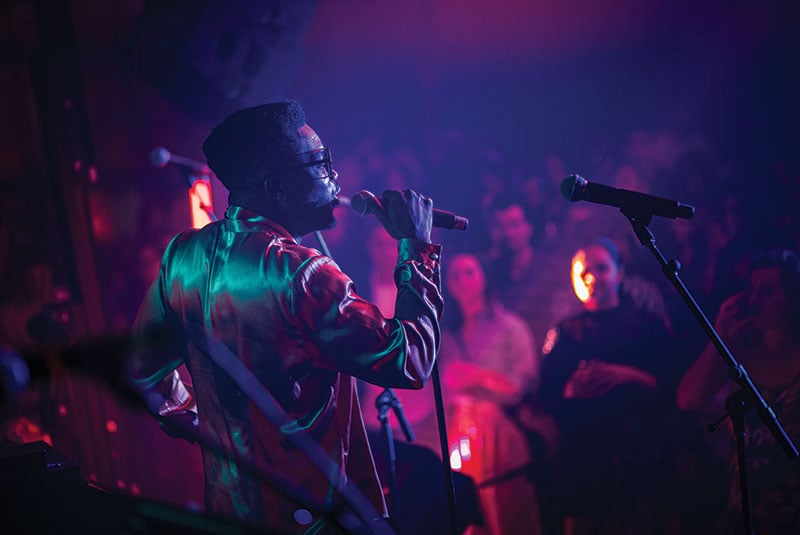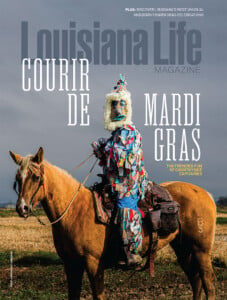The Bumping Sound of Cimafunk

A star on the rise with a throwback style of funk uniquely his own, Grammy-nominated Cuban musician Cimafunk took some time to speak about his artistic process, his journey as a working musician and the importance of valuing education not just for the next generation but for himself as well.
As a child, what piece of art sparked in you the need to create and perform? “My first experience performing was at church as a child and young teen. Those were specific songs that you were supposed to learn and perform, and there was a certain way of performing them, but it allowed me to express myself and sing and learn. In Cuba, most households are very musical, so there’s music all the time when people are hanging out and when people are eating dinner. There were always opportunities to sing and create with my family.”
You spent several years working with prominent Cuban musicians Raúl Paz and Liuba María Hevia. What did that time teach you about what it meant to become a working performer? “My early time working with other performers was important. I was really broke, and it helped me have a little bit of money in my pocket. But more than anything, it just gave me a look into the lifestyle of a musician, the business aspects, and the different ways that music is made and performed. It’s also where I connected with the live show and its importance, not just as enjoying it but also as a way to build a sustainable career because you can’t fake it.”
Your name references the Cimarróns -— escaped slaves who formed self-sustaining communities in Cuba during the colonial era. Was taking on that moniker an inspiration to continue the Cimarróns’ revolutionary example through your music? “My approach is identity and history and culture and being Black and celebrating Blackness is just being the best version of yourself. So, on the one hand, when I found out that my family had a history of Cimarrón culture and that there were a lot of distant family members of mine who were Cimarrónes, that was something that I found interesting and I studied a lot. And it’s something that I’m passionate about and I’m proud of. On the other hand, it’s not something that I discuss on a daily basis. I certainly celebrate my hair, my skin and other aspects of my culture, but I do it in a way that makes me happy.”
How crucial is the live performance experience not just for yourself but for audiences to really embrace the whole that is your work? “The live show is where you can really set yourself apart from others as a performer. We’re all artists, we’re all creative but not everyone can get up and make the crowd move, particularly when they don’t understand the language or they might come from a different culture. It’s an honor to be able to do that. When I started to think about music, the people that really threw me in were great recording artists, but more than anything, they were great performers, like James Brown, George Clinton, Irakere, or Benny Moré. These are people who, with a microphone and a backing band, can work wonders. And that really inspired me.”
You recently taught a class in New Orleans on the musical bridge between New Orleans and Havana, Cuba. Do you see yourself as an educator as well? “I do a lot of work with kids in New Orleans and in Cuba and always learn a tremendous amount. A lot of times they’re sharing music with me. Not only do I give them feedback, I absorb from that, and I take new lessons. Recently, I sent one of my songs to some young kids in Cuba, so that they could make the arrangement, and then when I visit them, I can sing the song with them. When they sent me back the arrangement, it was different. I don’t want to say I like it better, but I like it just as much as what I had put together with my band. So we’re constantly learning and teaching, and that’s why I think we’re all educators.”
